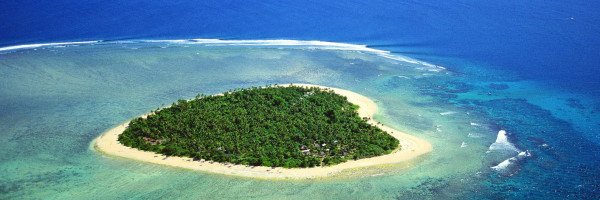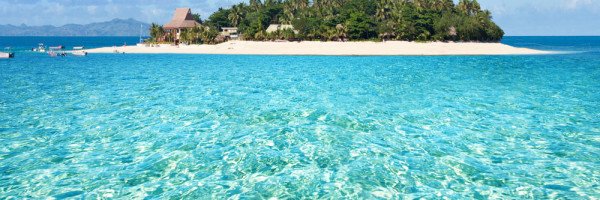The Significance of Caves in Fijian Culture
Fiji’s caves have long been more than mere geological formations; they have served as sacred sites and shelters for its indigenous people. The Fijian culture is deeply intertwined with its natural surroundings, and caves, in particular, are steeped in symbolism and history. Traditionally, these caves were places for refuge during conflicts, storage for food, and even sites for spiritual rituals. Many caves, such as the famous Sawa-i-Lau caves, are revered for their beauty and historical significance. They are often linked to legends and local myths, which provide a glimpse into the beliefs and traditions of the Fijian people. Visitors to these caves can appreciate not only the stunning stalactites and stalagmites but also the profound respect the Fijians have for these natural wonders. For those interested in exploring the cultural tapestry of the islands, visiting these historic caves offers a unique opportunity to connect with Fiji’s past. For more information about the cultural importance of caves, check out Fiji Islands.Archaeological Discoveries in Fiji’s Caves
The caves of Fiji have become crucial archaeological sites that have unveiled a wealth of knowledge about the island’s pre-colonial history. Excavations in these caves have uncovered pottery, tools, and other artifacts that date back thousands of years. These findings provide invaluable insights into the daily lives, practices, and societal structures of the early Fijian inhabitants. One notable example is the Namuamua Cave, which has yielded artifacts that suggest a complex society engaged in trade, agriculture, and craftsmanship. The analysis of these items allows archaeologists to piece together the patterns of settlement, migration, and interaction with neighboring islands. For scholars and history enthusiasts, exploring Fiji’s caves is akin to stepping into a time machine that reveals the rich tapestry of human life that once thrived here. To discover more about Fiji’s archaeological treasures, visit Fiji Islands.Mythology and Legends Linked to Fiji’s Caves
Fiji’s caves are not only archaeological sites but also repositories of mythology and folklore. Many caves are associated with stories of deities, ancestors, and mythical creatures that have shaped the cultural landscape of the islands. For instance, the caves of the Yasawa Islands are believed to be the dwelling places of ancient spirits, and local legends often depict heroic deeds performed within these sacred spaces. These narratives are an essential part of Fijian identity and are passed down through generations, serving as a connection to the past and a means of preserving cultural values. Engaging with these stories during cave visits enriches the experience and provides visitors with a deeper appreciation for the island’s heritage. Understanding these myths is important not just for tourists but also for locals who seek to keep their traditions alive. Learn more about the legends surrounding Fiji’s caves at Fiji Islands.The Role of Caves in Trade and Social Interactions
The geographic location of Fiji has historically positioned it as a hub for trade and social interactions among various Pacific islands. Caves played a critical role in these exchanges, serving as storage facilities for goods and a meeting point for different tribes and communities. The cave systems often offered protection from the elements and provided a secure place for trade negotiations. Evidence suggests that specific caves were frequented by traders, highlighting their importance in fostering relationships between different groups. This aspect of Fijian caves reflects a sophisticated understanding of geography and social dynamics that contributed to the islands’ development. For those interested in exploring these historical trade routes, the Fiji Islands website provides valuable insights into the region’s past.Conservation Efforts for Fiji’s Historic Caves
As sites of significant historical and cultural value, Fiji’s caves require careful conservation to protect them from environmental degradation and human impact. Various organizations and local communities are actively working to preserve these treasures, recognizing their importance not only for tourism but also for education and cultural identity. Efforts include monitoring visitor numbers, implementing sustainable tourism practices, and conducting ongoing research to better understand the caves’ ecosystems. These initiatives aim to balance the need for tourism with the imperative to protect these sites for future generations. Engaging in responsible tourism practices when visiting these caves is crucial for their preservation. For more details on responsible tourism in Fiji, refer to Fiji Islands.Modern Tourism and Its Impact on Cave Exploration
The rise of ecotourism in Fiji has brought greater awareness of the islands’ historic caves, attracting visitors eager to explore their natural beauty and rich history. Guided tours often include educational components that inform tourists about the archaeological significance and cultural narratives linked to these caves. While tourism can provide economic benefits to local communities, it also poses challenges, such as potential damage to delicate cave formations and ecosystems. Striking a balance between promoting tourism and protecting these historic sites is essential. Tourists are encouraged to engage with local guides who can provide insights into the caves’ significance and ensure responsible exploration. For a comprehensive guide on visiting Fiji’s caves, check Fiji Islands.Connecting with Nature: Cave Exploration as a Learning Experience
Exploring Fiji’s historic caves offers a unique opportunity for both adventure and education. Visitors can immerse themselves in the natural beauty of these formations while learning about the history and culture of the Fijian people. Guided tours often emphasize the importance of conservation, encouraging visitors to appreciate the delicate balance of nature and history. Additionally, engaging with local communities during cave visits can enhance understanding of the cultural significance of these sites. Interactive experiences, such as storytelling sessions led by local elders, can provide deeper insights into the legends and traditions that surround the caves. For those traveling from New Zealand, incorporating cave exploration into an itinerary can be a rewarding experience that highlights both adventure and learning. Discover more about the enchanting caves of Fiji at Fiji Islands.FAQs
What are Fiji’s historic caves?
Fiji’s historic caves are natural formations that have served as important archaeological sites, revealing insights into the island’s pre-colonial history. These caves contain artifacts, ancient rock art, and evidence of early human habitation, providing a glimpse into the lives of Fiji’s ancestral communities.
How do Fiji’s caves contribute to our understanding of pre-colonial history?
The caves serve as time capsules, preserving tools, pottery, and other items that reflect the cultural practices, social structures, and daily lives of Fiji’s early inhabitants. By studying these artifacts, researchers can piece together the history of migration, trade, and settlement patterns in the region.
What types of artifacts have been discovered in Fiji’s historic caves?
Archaeologists have uncovered a variety of artifacts in Fiji’s historic caves, including stone tools, pottery shards, fishhooks, and remnants of food. These objects help to illuminate the material culture and subsistence strategies of pre-colonial Fijian societies.
Are there any famous caves in Fiji known for their historical significance?
Yes, some of the most notable caves include the Naihehe Cave, known for its historical significance as a refuge during conflicts, and the Sawa-i-Lau Caves, famous for their stunning beauty and archaeological finds. Each of these caves provides valuable insights into Fiji’s past.
How do researchers access and study Fiji’s historic caves?
Researchers typically collaborate with local communities and cultural heritage organizations to access the caves. They use various archaeological methods, including excavation and analysis of artifacts, to gather data while ensuring the preservation of these important sites.
What role do local communities play in the preservation of Fiji’s historic caves?
Local communities play a crucial role in the preservation of Fiji’s historic caves by acting as stewards of their cultural heritage. Their knowledge and traditions contribute to the protection of these sites, and many communities engage in tourism initiatives that promote awareness and conservation efforts.
How can visitors experience Fiji’s historic caves today?
Visitors can experience Fiji’s historic caves through guided tours offered by local operators, which often include educational information about the caves’ history and significance. These tours not only provide an opportunity to explore the natural beauty of the caves but also to learn about Fiji’s rich cultural heritage.
References
- Fiji Islands Official Tourism Website – The official site providing insights into Fiji’s cultural heritage, including information about its caves and historical significance.
- National Geographic: Fiji’s Caves and Archaeological Significance – An article exploring the archaeological findings in Fiji’s caves and their implications for understanding pre-colonial history.
- BBC Travel: Fiji’s Hidden History in Its Caves – A travel piece that highlights how Fiji’s caves offer a glimpse into the island’s ancient civilizations.
- ScienceDirect: Insights from Fiji’s Caves – A scholarly article discussing the research conducted in Fiji’s caves and what it reveals about the island’s past.
- The Conversation: Fiji Caves Reveal Secrets of the Past – An analysis of how cave findings in Fiji contribute to the understanding of its pre-colonial societies.







